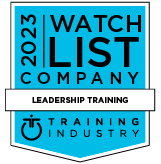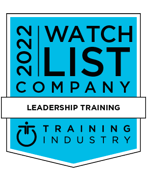The Science Behind Change

Contents
Change, by definition, means to make or become different.
For most of us, change is hard.
The word itself can be a trigger and is often perceived as a threat in our brain.
Whenever it's evident that change is needed, it's often met with some form of resistance.
In the context of the workplace, resistance to change can lead to counterproductive work behavior and, in some cases, withdrawal.
Why does this happen?
There are two main reasons: a persons’ relationship with their manager(s) and the notion of being genuine.
This all boils down to implementation and how change is executed.
Good leaders take it upon themselves to positively change their leadership habits to create a psychologically safe culture for their team.
This is the basis on why DX built the CARE™ Model; an acronym for Clarity, Autonomy, Relationships, and Equity.
These four elements provide the basic constructs to build psychologically safe teams that are high performing and ready to take on change.
Here are a few additional tools on implementing positive change while decreasing the human brain's natural resistance and making change feel genuine.

Lewin’s Three-Step Model
Psychologist, Kurt Lewin, suggests there are three key steps for successful organizational change: Unfreezing, Movement, and Refreezing.
Consider this model in the context of wanting to change an ice cube by putting decorative herbs and edible flowers inside the cube.
First, you would have to unfreeze the cube, insert the flower/herb, and then refreeze the cube. That's essentially how Lewin's model works.
Unfreezing
In the unfreezing phase, organizations are unfreezing the status quo.
This means they are increasing driving forces to move away from the status quo and decreasing restraining forces that are boundaries for change.
For example, say you're a leader who is trying to implement DX's CARE Model into your team's culture.
An initial step to unfreezing your current culture would be to have a meeting with your team to discuss and explain the WHY behind the model.
Why is this model being implemented? What currently isn't working?
What's in it for the team? Or WIIFM (what's in it for me).
What does success look like when we implement this model into our team culture?
Movement
In Lewin's movement phase, organizations are keeping up the momentum of the change that is being implemented.
In our earlier example, this is where you, the leader, would unpack and explain the CARE Model to your team.
You would breakdown what it means to have more clarity, autonomy, relationship, and equity within your culture and perhaps facilitate a discussion on ways each of these elements can be implemented.
As with any change, there may be push back at first.
Keep going and empower your team to get creative with ways this change could be implemented.
The more you empower your team, the more they will own implementing the change.
Refreezing
In the refreezing phase, organizations solidify change established in the movement phase so the culture doesn't revert to the previous status quo.
This is where good leaders lead by example and make change feel genuine rather than a temporary fix.
Change starts from the top and consistency is key!

Kotter’s Eight-Step Process
Harvard Business School Professor, John P. Kotter, built on Lewin’s Three-Step Model to create a more detailed approach on how to implement change.
Kotter spent four decades observing leaders and organizations fail and succeed in implementing change. He built this process by extracting what worked and what didn't work to create his methodology.
According to Kotter, “Whenever smart and well-intentioned people avoid confronting obstacles, they disempower employees and undermine change.”
Core components of Kotter's process circle around DX's CARE Model in creating clarity, giving autonomy and empowering people to execute their jobs, building relationships within a team, and providing resources equitably for the team to get the job done.
Here's a breakdown of using DX's CARE Model to implement Kotter's steps:
1. Create a Sense of Urgency
Use clarity to create a compelling reason why change is needed and establish a sense of urgency in the team.
2. Build a Guiding Coalition
Use relationship to form a coalition with enough power to lead the change.
3. Form a Strategic Vision & Initiatives
Use clarity to create a new vision toward the needed change and strategies for achieving the vision.
4. Enlist a Volunteer Army
Use clarity, autonomy, and relationship to communicate the vision and engage everyone in executing the vision.
5. Enable Action by Removing Barriers
Use autonomy and equity to empower others to act on the vision by removing barriers to change and encouraging risk-taking and creative problem-solving.
6. Generate Short-Term Wins
Use relationship and equity to plan for, create, and reward short-term “wins” that move the organization toward the new vision.
7. Sustain Acceleration
Use clarity and autonomy to consolidate improvements, reassess changes, and make necessary adjustments in the new programs.
8. Institute Change
Use clarity to reinforce the changes by demonstrating the relationships between new behaviors and organizational success.

Organizational Development (OD)
Organizational development is a field of research, theory, and practice that contains multiple methods of change interventions to improve employee well-being and organizational effectiveness.
OD is built from modern philosophy studying how people become clear and make sense of their work environment, solve problems, and manage future change.
These three OD methods are useful in building psychologically safe teams that are high performing and ready to take on change.
1. Community Building
Community building encourages developing interpersonal relationships and increasing trust within teams.
Creating an environment dedicated to “water cooler” conversations, for example, enhances a team's morale and sense of belonging.
2. Survey Feedback
The emphasis here is on feedback. Feedback is a gift that helps build relationships while increasing clarity on employee attitudes.
3. Appreciative Inquiry (AI)
Appreciative Inquiry focuses on strengths rather than weaknesses when it comes to leadership and organizational development.
AI uncovers the unique qualities and strengths of individuals within a team. Once discovered, leaders can empower their people to use their unique skillset to implement needed organizational change.

Regardless of the type of tools or methodology you lean toward in implementing change, remember that change is our only constant.
The more we can flow with it and implement it successfully, the more we and our teams can thrive in this unpredictable world.
Great leaders take it upon themselves to positively change their leadership habits to create psychologically safe teams that are high performing and ready to take on change.
Are you a great leader?
Do you want to be?
Do you CARE?
Insights

Subscribe to Our Monthly Newsletter!
For managers and talent professionals who truly believe in putting people first, the CARE to Win blog is your gateway to the latest insights on human-centric leadership. Join us as we champion the people first movement.
Need some time apart? Are we emailing you too often? Just give us your feedback, and we promise we’ll respond. We really do care. And if it’s still too much, just unsubscribe. It’s cool.



